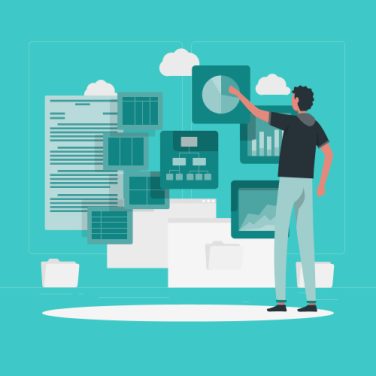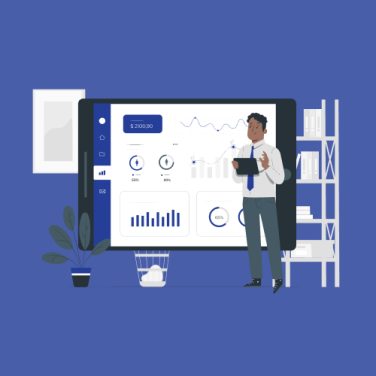Employee onboarding solutions are specialised software platforms that automate and enrich the new hire journey from offer acceptance through full productivity.
These tools digitise paperwork, e-signatures, and policy acknowledgements while integrating engagement activities and compliance checks. Self-service portals let new hires complete profile setup, benefits enrolment, and policy reviews at their own pace.
The impact of a structured onboarding process reaches beyond forms. Effective HR onboarding software creates positive first impressions, supports culture assimilation, improves policy adherence, and accelerates productivity by guiding new hires through tailored task flows. Audit trails and compliance features help track local labour law requirements.
Market trends highlight a shift toward digital employee onboarding, driven by remote and hybrid work models. Organisations rely on employee onboarding tools with AI-driven personalisation to deliver tailored learning paths, real-time chat support, and data-driven progress tracking. Continuous feedback loops via pulse surveys enable ongoing improvements.
TL;DR: Your roadmap to seamless onboarding

A concise roadmap to employee onboarding solutions highlights essential benefits and best practices.
- Streamlined employee onboarding solutions improve retention—personalised journeys can boost new-hire retention by up to 50%—while increasing engagement and operational efficiency.
- Invest in HR onboarding software with digital employee onboarding features, self-service portals, and real-time analytics integration.
- Use a structured roll-out plan: assess current processes, configure your platform, pilot with a select group, collect feedback, and scale with continuous improvement.
Key components of effective onboarding solutions
Effective employee onboarding solutions rely on integrated components that streamline and enrich every step of the new hire journey.
Automating Paperwork and Compliance:
Onboarding solutions automate documentation and legal compliance, ensuring all forms are completed accurately and stored securely.
- Automated document collection with digital signatures and policy acknowledgements.
- Centralised storage and audit trails to meet regulatory requirements.
Guided Task Management:
Task management dashboards provide visibility for HR teams and new hires, tracking progress and sending timely reminders.
- Customisable checklists assign tasks like equipment setup and training enrolments.
- Automated notifications alert stakeholders to pending items and deadlines.
Additional key components include:
- Interactive Training Modules: Embedded courses, video tutorials, and knowledge bases enable self-paced learning and consistent skill development.
- Self-Service Portals: New hires can complete profile setup, benefits enrolment, and policy reviews from a user-friendly portal, reducing HR support requests.
- AI-Powered Chatbots: 24/7 virtual assistants answer FAQs, guide new hires through tasks, and escalate complex issues to HR personnel.
Platforms like MiHCM Enterprise integrate these components into a unified interface. The Talent Acquisition & Onboarding feature hands off candidate data directly to self-service portals, while SmartAssist chatbots reduce response times. HR Analytics tracks completion rates and identifies process bottlenecks.
Benefits of HR onboarding software

HR onboarding software delivers measurable improvements across retention, satisfaction, and process efficiency. By leveraging digital workflows, organisations can eliminate manual bottlenecks and deliver consistent experiences for every new hire.
Solutions such as MiHCM Lite and MiHCM Enterprise incorporate dedicated modules that streamline recruitment, onboarding, and ongoing compliance.
Companies report accelerated ramp-up times of up to 60% by using guided, role-specific task flows. These workflows ensure every step—from equipment provisioning to mandatory training—is completed in a structured manner. Automated reminders and progress dashboards provide transparency for both HR teams and new employees.
- Improved New-Hire Satisfaction and Retention: Personalised welcome plans and self-service portals foster engagement. Higher satisfaction correlates to retention improvements as new hires feel supported from day one.
- Reduced HR Workloads: Automation of routine tasks such as form completion, benefits enrolment, and policy acknowledgements frees HR staff to focus on strategic initiatives.
- Ensured Compliance with Local Regulations: Digital audit trails and built-in compliance checks maintain up-to-date records and meet labour law requirements.
- Data-Driven Optimisation: Real-time analytics on task completion rates, time-to-productivity, and new-hire feedback guide continuous process enhancements.
Investing in comprehensive HR onboarding software yields simplified, automated onboarding workflows and drives higher new-hire engagement and retention delivering a rapid and lasting return on investment.
How digital employee onboarding transforms the new hire experience
Digital employee onboarding leverages emerging technologies to create immersive, consistent, and flexible experiences for all hires. By adopting comprehensive digital employee onboarding platforms, organisations ensure culture alignment, skill development, and engagement regardless of geography or schedule.
- Virtual Orientation and Video Introductions: Host live webinars or pre-recorded video introductions that highlight company history, values, and team overviews. Interactive Q&A sessions foster immediate connection with managers and mentors.
- Personalised Onboarding Journeys: AI-driven engines design unique task flows and learning paths based on job function, location, and previous experience, ensuring relevant content is delivered at the right time.
- Mobile Access for Remote Hires: Purpose-built mobile apps enable completion of onboarding checklists, document uploads, and training modules on smartphones or tablets. Push notifications keep new hires on track without desktop access.
- Continuous Feedback Loops: Embedded pulse surveys and AI-powered sentiment analysis capture ongoing feedback. HR uses these insights to adapt communication, refine training, and improve the overall onboarding process.
- Gamification and Social Engagement: Leaderboards, badges, and peer-to-peer interactions encourage participation and foster a sense of community among new hires.
With digital employee onboarding solutions, organisations gain higher completion rates, streamlined communication, and data-driven insights—ultimately creating a welcoming and efficient path to productivity.
Top features to look for in employee onboarding tools

When evaluating employee onboarding tools, organisations must prioritise features that deliver automation, real-time support, flexibility, and actionable insights.
A well-rounded solution drives consistent experiences, scales as the workforce grows, and integrates with existing HR systems. Additionally, ensure the solution offers open APIs and integration connectors to tie onboarding workflows seamlessly into existing HRIS and payroll platforms, eliminating redundant data entry and reducing compliance risks.
- Seamless Recruitment Process: Look for modules that connect CV screening, interview scheduling, and offer issuance. MiHCM’s Talent Acquisition & Onboarding automates job postings, tracks candidate pipelines, and automatically creates onboarding tasks once an offer is accepted.
- AI-Powered Chatbots: Chatbots reduce HR inquiries by handling FAQs, guiding new hires through document submission, and suggesting relevant training resources.
- Customisable Workflow Builder: A visual workflow designer lets HR tailor onboarding flows, approval sequences, and task assignments. Conditional logic ensures role-specific content and compliance checklists align with regional regulations.
- Integrated Analytics Dashboards: Centralised dashboards in MiHCM Data & AI provide insights into onboarding metrics—task completion rates, time-to-productivity, and employee NPS—enabling data-driven optimisations.
- Mobile Attendance Tracking and Schedule Management: Support mobile clock-ins, shift confirmations, and geofenced attendance verification for remote or frontline workers. Mobile alerts and schedule views keep new hires informed about orientation sessions and training events.
Choosing employee onboarding tools with these capabilities empowers HR to deliver streamlined, engaging, and measurable onboarding experiences. Integration with HRIS and payroll further consolidates data, reduces manual work, and ensures consistency across systems.
Step-by-step guide to implementing onboarding solutions
Implementing employee onboarding solutions requires a structured approach. Follow this phased guide to assess, deploy, and scale your platform successfully.
| Phase | Key Activities |
|---|---|
| Phase 1 Assess & Define Goals |
|
| Phase 2 Select & Configure Platform |
|
| Phase 3 Migrate Data & Integrations |
|
| Phase 4 Pilot & Feedback |
|
| Phase 5 Company-Wide Rollout |
|
| Phase 6 Monitor & Refine |
|
Throughout each phase, involve key stakeholders: HR leadership, IT, legal, and hiring managers. Establish clear communication channels and governance to manage change. Frequent check-ins during the pilot help surface issues early, and continuous monitoring post-launch drives ongoing enhancements.
Following this step-by-step plan ensures a smooth implementation of your digital onboarding solution, minimises disruption, and positions HR teams for continuous improvement.
Integrating onboarding with HRIS and payroll
Integrating onboarding with HRIS and payroll platforms creates a unified environment where new hire data flows seamlessly through every system—eliminating manual handoffs and reducing errors. A single source of truth ensures accuracy in employee records, compensation, and compliance tracking.
Benefits of end-to-end integration:
- Single Source of Truth: Consolidated employee profiles minimise data discrepancies and administrative gaps across HRIS and payroll modules.
- Reduced Errors and Manual Effort: Automated data sync updates payroll records immediately upon form completion, avoiding duplicate entry and compliance risks.
- Global Payroll Management: Support for multi-currency and multi-country payroll calculations ensures accurate compensation for international hires.
- Trigger-Based Workflows: Onboarding completion can automatically initiate probation reviews, benefits activation, and access provisioning without manual intervention.
This integrated onboarding workflow reduces administrative delays and ensures compliance with local labour laws and tax regulations. HR and finance teams gain real-time visibility into headcount changes, cost centres, and payroll forecasts. As a result, organisations can scale hiring globally without introducing data silos or manual errors.
Choosing employee onboarding solutions that natively integrate with HRIS and payroll systems delivers a streamlined, accurate, and compliant process—enabling HR teams to focus on strategic talent initiatives and new-hire engagement.
Measuring onboarding success with analytics

Data-driven insights are essential for evaluating the effectiveness of employee onboarding solutions. Key metrics to track include time-to-productivity, task completion rate, and new-hire Net Promoter Score (NPS).
- Time-to-Productivity: Measures the duration from an employee’s start date to fully meeting role expectations. Analysing this metric highlights process efficiencies and bottlenecks.
- Task Completion Rate: Tracks the percentage of onboarding tasks completed on time. Low rates may indicate confusing workflows or missing resources.
- New-Hire NPS: Captures satisfaction levels through pulse surveys, providing qualitative feedback on the onboarding experience.
Additional metrics such as completion time per module, frequency of chatbot interactions, and conversion rates from orientation to active productivity further refine onboarding strategies. HR teams can filter reports by department, location, or manager to pinpoint specific needs and allocate resources effectively.
MiHCM Data & AI enables HR teams to visualise these metrics through customisable dashboards. Interactive charts reveal trends in onboarding velocity and identify at-risk hires who may benefit from targeted engagement campaigns.
Predictive analytics models can forecast potential drop-off points by analysing historical data. Pre-emptive interventions—such as automated check-ins or tailored training modules—can then be triggered. Continuous A/B testing of process changes ensures that updates deliver measurable improvements.
By leveraging analytics within employee onboarding solutions, organisations gain a feedback loop that drives ongoing optimisation of processes, elevates new-hire satisfaction, and secures higher long-term retention rates.
Common onboarding challenges and how to overcome them
Despite best intentions, organisations face common challenges during onboarding. Addressing these issues with employee onboarding solutions helps create consistent, engaging, and efficient experiences.
- Information Overload: New hires must absorb company policies, benefits information, security protocols, and technical procedures. Breaking content into microlearning modules with checkpoints and knowledge base articles enables incremental learning. MiHCM’s interactive training module supports quizzes and progress tracking to reinforce understanding.
- Poor Communication: Without consistent updates, new hires may miss critical deadlines for documentation or training. Automated reminders via email, SMS, and in-app notifications ensure tasks are completed on schedule. SmartAssist chatbots provide instant answers to FAQs, reducing wait times for HR responses.
- Data Silos: Manual data entry between onboarding forms and payroll systems risks inaccuracies. Utilising integrated platforms ensures workforce data entered by new hires in self-service portals populates HRIS and payroll modules automatically, maintaining data integrity.
- Low Engagement: Standard checklists can feel impersonal. Personalised journeys, mentor assignments, and gamification elements such as badges, points, and leaderboards increase interactivity. Analytics dashboards track engagement scores and allow HR to introduce targeted campaigns.
- Remote Onboarding Friction: Virtual hires lack in-person support. Mobile-friendly onboarding apps provide access to orientation videos, resource libraries, and social communities. Scheduled video introductions and virtual coffee chats foster connections with managers and peers.
Addressing these challenges with employee onboarding tools that feature self-service portals, AI chat support, and robust analytics empowers HR teams to deliver a consistent, engaging, and efficient onboarding experience—no matter where new hires are located.
Proper planning, technology selection, and continuous refinement ensure that common obstacles become opportunities for creating impactful first impressions.
Frequently Asked Questions
What is the typical ROI of onboarding software?
Can onboarding solutions handle remote and hybrid teams?
How secure is new-hire data in digital platforms?
What support and training are provided during implementation?
How do I scale my onboarding as my company grows?
Employee onboarding tools built on modular, API-driven architectures allow HR to replicate and customise workflows across new business units or regions quickly. Automated triggers and integration connectors keep HRIS, payroll, and benefits platforms in sync. Analytics dashboards track performance metrics across teams, enabling data-driven adjustments that support high-volume hiring without manual bottlenecks. Scalable cloud infrastructures dynamically allocate resources to support seasonal hiring spikes or large recruitment drives.



